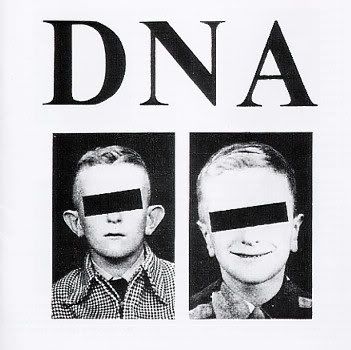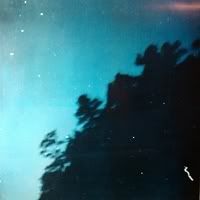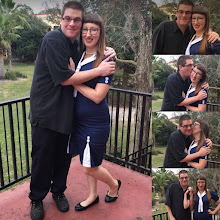
2004, No More Records; available
32 tracks, 63:04

2004, G3G/Spooky Sound; reissued by No More Records; available
11 tracks, 32:04
No wave was one of those fringe things that nobody expected to be remembered. Centered around downtown New York, no wave was a reaction to the staleness of punk (which had only existed officially for a little over a year!) and music in general. Several bands were completely self-taught; some were professionally trained, but they ignored this in a search for pure release through sound. Bands denied the name anyway, but history (and rock journalism) has made it stick. The scene was officially dead by 1982, and that's being generous. Some figures, like Lydia Lunch and Arto Lindsay, went on to other projects and relatively greater fame. Others faded into obscurity, making a few select appearances and nothing more. Strangely, around the time it died, no wave's impact began to be felt. The whole nihilism and deconstructionist attitude of the "movement" had been absorbed into many strains of experimental and extreme music, both in and outside of New York (see the late 80's downtown scene, the whole slew of noise rock bands, Silver Abuse, Blurt, Crawling Chaos, Fire Engines, Der Plan, D.A.F., Sonic Youth, Live Skull, Cop Shoot Cop, Swans, etc.). Even the more traditional industrial bands had started to show a distinct no wave influence. Fast forward to the early-to-mid-90's. A no wave revival has started in Chicago (see the excellent Lake Of Dracula and Quintron's truly bizarre debut LP I.F. 001-011). Japanese bands like Melt-Banana and Space Streakings are producing their own bizarre takes on no wave. Sonic Youth, admittedly the most successful no wave-inspired band, are considered godfathers of indie. Now look at the past nine years. Liars, Sightings, and other bands proudly declare no wave as an influence. Right when everyone was beginning to accept no wave as a minor but influential blip on the experimental radar, No More Records issued (well, reissued in the case of MARS LP) two retrospectives of the originals. The question is: How do they sound now, with the passage of time?
Surprisingly, DNA and Mars both still have the ability to enthrall, annoy, and disturb, usually all at once. Both compilations are arranged chronologically, and each contains the complete studio output of the band represented, along with very informative booklets. DNA is bolstered with an unreleased studio track and several live tracks. Only two of the tracks are over three minutes in length: the previously unreleased "Grapefruit" at nearly five minutes, and the live "Surrender" at just under four. Every other track is between fifty seconds and just under three minutes. However, not a single second is wasted: DNA knew how to get maximum impact out of every song, and even the rare moments of silence are important to the compositions. The progression is striking over the span of the disc. Beginning as a trio with guitarist/vocalist Arto Lindsay, drummer Ikue Mori, and keyboardist/vocalist Robin Crutchfield, DNA were comparable to hardly anything else. The debut single ("You & You"/"Little Ants") is perhaps the most extreme output; Crutchfield's bouncy electronics and Mori's tribal-esque drumming anchor the songs, allowing Lindsay to go wild on both guitar and vocals. The man can sound like a poet speaking abstract verse or a possessed preacher declaring fire and brimstone upon his pagan cult. Sometimes he does this in the same song, making for a delightfully odd contrast. The band's next recordings were four tracks for the infamous Brian Eno-produced NO NEW YORK compilation. This finds a more subdued DNA producing the garagey "Egomaniac's Kiss" and the punky "Size". However, "Lionel" and "Not Moving" (featuring a rare vocal turn from Crutchfield) are still fairly unhinged exercises in noise. Soon after this recording, Crutchfield left to form the excellent Dark Day (a synth-oriented no wave treasure best experienced on the unfortunately rare COLLECTED (1979-1982)); Tim Wright, formerly of Pere Ubu, was his replacement, and he was definitely a smart choice! Wright's bass playing was somehow rhythmic, melodic, and completely abstract. This is most evident on A TASTE OF DNA. This six-song EP contains under ten minutes of the most radical rock deconstruction ever committed to tape. Several songs feature Lindsay spouting Portuguese in addition to English, and Wright produces the kind of basslines many lesser bands would kill for. "Blonde Redhead" (yes, the band got their name from the song) and ""New Fast" particularly stand out, but the whole EP is a joyous burst of true creativity. Next up is the unreleased studio track "Grapefruit", which isn't a lost classic track by any means. Still, it does feature Lindsay's wordless chanting over a fairly minimalist instrumental track, and its length qualifies it as DNA's sole "epic", so it's a worthy inclusion. The following six tracks are instrumentals recorded for "the Squat Theatre's Obie winning MR. DEAD & MS. FREE", whatever that is; they also surfaced on the FRUIT OF THE ORIGINAL SIN compilation. They have an almost dubby production, most apparent on the pseudo-gothic "Delivering The Good". All six of them are well worth hearing as examples of DNA's restrained side. The remaining fourteen tracks are all live, featuring both incarnations of the band. Sadly, the legendary last encore cover of Led Zeppelin's "Whole Lotta Love" didn't make it (damn it!)*, but what did is truly fascinating despite a bit of questionable sound. Considering the source is original tapes, though, this is hardly worth complaining about. Only "5:30" from A TASTE OF DNA is reprised in the live tracks, and in a VERY different early version. The rest are unique to DNA's live sets, with the only other duplication being two versions of "Detached", one from each lineup. It's hard to pick standouts since all are great performances, but I particularly dig "Brand New" and "Calling To Phone". Given that it's basically DNA's complete discography, this is an absolutely essential CD.
MARS LP is barely half the length of DNA ON DNA, and it also contains no live recordings. However, the studio output of Mars was so awe-inspiring, it is perfectly suitable that it stands on its own. Originally formed as a nameless Velvet Underground cover band in 1975, and briefly performing as China, Mars can lay claim to being the first true no wave band. The band was formed by the late Sumner Crane (guitar and vocals), the late Nancy Arlen (drums), China Burg (a.k.a. Don Burg, Connie Burg, and Lucy Hamilton; guitar, vocals), and Mark Cunningham (bass, voice). Mars didn't get around to recording until 1977. That year saw the recording of their debut single. A-side "3E" was surprisingly normal, definitely betraying the Velvet Underground influence and giving little clue as to what lie on the flipside. That piece of music was "11,000 Volts", a shambling, discordant, shrieking mess of a song detailing a sadistic inventor and his robot slave. It is every bit as great as that sounds. Sadly, the release of this got delayed until 1978, during which time they got a slot on NO NEW YORK as well. Their four tracks showed a regression in sound, becoming denser and noisier while still maintaining an aura of professionalism. "Helen Forsdale" has guitars imitating the sounds of insects and "Hairwaves" simulates radio waves via feedback. Standout (and shortest of the four) "Puerto Rican Ghost" sounds like a coed Can during a drunken rampage, guitars violently see-sawing back and forth to angular drums and a throbbing bassline, with hallucinatory vocals not so much sung as shrieked in the voice of the damned. Finally in December of 1978, Mars was invited by Lust/Unlust Records owner Charles Ball to record an EP. Arto Lindsay was invited as producer, but since recording was accomplished via two binaural microphones set up in the center of an abandoned theater's stage, there wasn't much producing to be done. This odd recording betrays the sheer freedom that goes into these five tracks. Veering close to free improv and noise, tracks like "N.N. End" and "The Immediate Stages Of The Erotic" feature completely improvised vocal sounds (not lyrics, though) and the most abstract music on the disc. "Scorn" is based around the transcripted ramblings of a homeless friend of the band's and a horn played without its mouthpiece. Live recordings have revealed that there was a structure behind the madness, but it's not very apparent upon listening. This EP was delayed until 1980; in that time, the master became damaged in a flood, resulting in several lost frequencies. For MARS LP, a freshly discovered cassette master was used, allowing these recordings to be heard properly for the first time. Mars' studio output was previously reissued by Lydia Lunch's Widowpseak as 78, and then by Atavistic as 78+, but these releases were "reprocessed" by J.G. Thirlwell, which added heavier bass and more guitar noise; this was supposed to aid the lost frequencies of the EP, but the results are mixed. It also substituted live versions of "N.N. End" and "Scorn". It did have a few other live tracks that MARS LP is missing, but the MARS LP set makes it obsolete. This is also essential.
Mars did team up with Lindsay and Mori to record JOHN GAVANTI, a strange no wave opera which was heavy on wind instruments. It still has moments of guitar noise and lots of dissonant drumming, and it's also the closest no wave ever got to free jazz. Several Mars and DNA members ended up in post-no wave outfit Don King, producing a slightly more restrained version of what they had done previously. Crane and Arlen passed away, Crane in 2003 and Arlen three years later. Crutchfield continued to record as Dark Day and has released music under his own name. Arto Lindsay and Ikue Mori both became darlings of downtown NYC, racking up impressive discographies (especially Lindsay, contributing impressively to recordings by the Lounge Lizards and the Golden Palominos, as well as his duo Ambitious Lovers). Cunningham and Wright have had sporadic recording careers. Burg makes a few guest appearances now and then on other former no waver's albums. DNA called it quits in 1982, essentially ending no wave proper. Mars had thrown in the towel after recording MARS EP back in 1978. Still, the music continues to provide insight into a period where everyone involved was absolutely free and interested in truly pushing music to its absolute limits.
Dedicated to the memory of Nancy Arlen and Sumner Crane.
*UPDATE: The double LP release of DNA ON DNA does include "Whole Lotta Love", along with three newly discovered tracks and the encore version of "A New Low" from the last show.



